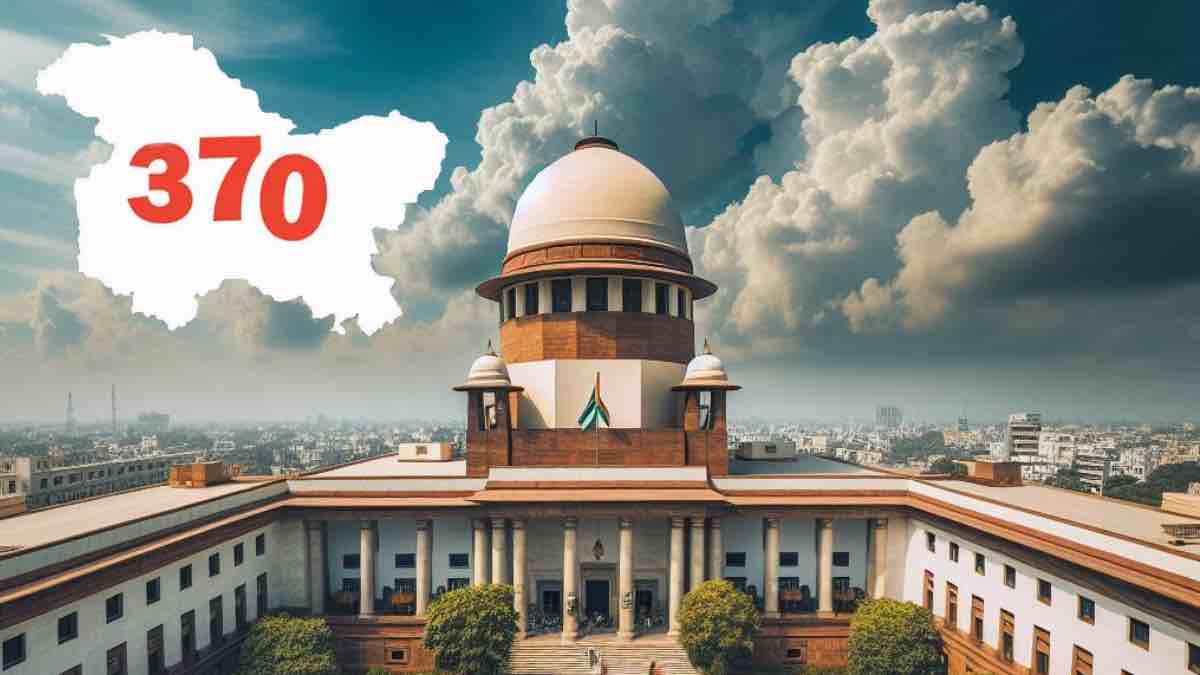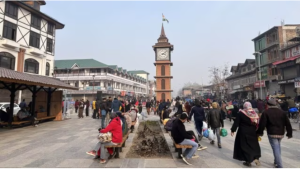
Article 370 Verdict: Unpacking the Supreme Court Judgment and its Implications for Jammu and Kashmir
The Supreme Court unanimously upheld the validity of the Centre’s 2019 decision to abrogate Article 370 of the Constitution from Jammu and Kashmir
Supreme Court Verdict on Article 370: In a landmark verdict, the Supreme Court on Monday upheld the 2019 decision of the Centre to abrogate special status for the erstwhile state of Jammu and Kashmir under Article 370 and set a deadline of September 30 next year for the assembly elections to be held.
The unanimous order by a bench of five judges, headed by Chief Justice of India DY Chandrachud, followed more than a dozen petitions challenging the revocation and a subsequent decision to split the state into two Union territories – Jammu and Kashmir and Ladakh. Follow Live Update on Supreme Court Verdict on Article 370
What was the Constitution position?
Article 370 of the Constitution, which provided autonomy for Jammu and Kashmir, was drafted in 1947 by Sheikh Abdullah, then the state’s prime minister, and accepted by India’s first prime minister Jawaharlal Nehru. Classified only as a temporary provision, it was included in the Indian Constitution in October 1949.
How did the picture change in 1954?
A further provision added to the Constitution in 1954 as part of Article 370, Article 35A empowered state lawmakers to ensure special rights and privileges for permanent residents of the state.
But it was scrapped with the repeal of Article 370, allowing non-Kashmiris to buy property in the region and ending local control over state government jobs and admission to colleges.
How has the picture of Kashmnir changed since 2019?
Since 2019, the Narendra Modi government has announced more investments for the region in areas such as industries, healthcare, education and tourism. It recently listed Kashmir’s new-found lithium reserves for private mining.
Tourism has also grown since 2019 and separatist violence has fallen, the government said, with a G20 meeting on tourism held in Srinagar earlier this year during India’s presidency of the bloc.
Here’s what the apex court’s judgment on Article 370 abrogation means for Jammu and Kashmir.
Special status of Jammu and Kashmir under Article 370
Article 370 of the Constitution gave special status to Jammu and Kashmir in the Indian Union and restricted the Centre’s legislative powers with respect to the state. It gave the state legislature to make its own laws in all matters except for finance, defence, foreign affairs and communications.
On Monday, the Supreme Court held that it need not adjudicate on the validity of the presidential proclamations announcing President’s rule in the UT since petitioners did not challenge the same. The court found that no material relief could be given as the President’s rule was withdrawn in October 2019.
The five-judge constitution bench headed by Justice Chandrachud, in its three concurring judgements, dealt with the question of whether the provisions of Article 370 were temporary in nature or they acquired a permanent status in the Constitution at the end of the J&K Constituent Assembly’s tenure in 1957.
“We have held that Article 370 is a temporary provision on a reading of the historical context in which it was included,” said the CJI, who wrote the judgment for himself and Justices BR Gavai and Surya Kant.
He said Article 370 was introduced to serve two purposes, including the transitional purpose to provide for an interim arrangement until the Constituent Assembly of the state was formed and could take a decision on the legislative competence of the Union on matters other than the ones stipulated in the Instrument of Accession and ratify the Constitution.
Article 35A
Article 35A under Article 370 of the Constitution was introduced through a presidential order in 1954 to continue the old provisions of the territory regulations. The article permitted the Jammu and Kashmir state legislature to define permanent residents of the region. It forbade outsiders from permanently settling, buying land, holding local government jobs or winning education scholarships in the region.
The article, referred to as the Permanent Residents Law, also barred female residents of Jammu and Kashmir from property rights in the event that they married a person from outside the erstwhile state.
Re-organisation of Jammu and Kashmir
With the abrogation of Article 370, the Centre had also reorganised the erstwhile state of Jammu and Kashmir into two Union Territories — Ladakh and Jammu and Kashmir. Ladakh was carved out as a Union Territory without a legislature, while Jammu and Kashmir had a legislative body. Both the UTs are being administered by the Centre-appointed lieutenant governors since no assembly elections have taken place in Jammu and Kashmir since August 5, 2019.
On Monday, the apex court noted that the solicitor general of India had submitted that the statehood of J&K would be restored and the status of UT was temporary for J&K. In view of the submission made by the SG, the court stated that it did find it necessary to determine whether the reorginasation of J&K into UT was valid. The reorganisation of Ladakh as UT was upheld as Article 3 allowed a portion of the state to be made as UT. The question whether Parliament can convert a state into a UT was left open, LiveLaw reported.
Delimitation of parliamentary and legislative constituencies
In May 2022, the Jammu and Kashmir Delimitation Commission notified the new boundaries, names and number of assembly constituencies in Jammu and Kashmir, paving the way for the first-ever assembly elections in the Union Territory.
The commission issued its final order on May 5, earmarking 43 seats to the Hindu-majority Jammu region and 47 to Muslim-majority Kashmir – making up a total of 90 seats for the Union territory’s assembly, up from the current strength of 83.
Out of the seven new seats, six were allotted to Jammu and one to Kashmir. The panel finalised the union territory’s new electoral map on May 5, 2022. For the first time, the panel reserved nine seats for scheduled tribes (ST), reorganised some Lok Sabha constituencies while keeping their total number at five, renamed some assembly constituencies, and redrew some others.
All Lok Sabha constituencies now comprise 18 assembly segments each. It also recommended that members be nominated from Kashmiri migrant communities, which primarily comprise the Kashmiri Pandits, who were displaced at the peak of militancy in the region in the 1990s.
Earlier, Jammu had 37 seats, and Kashmir had 46.
In February 2023, the Supreme Court dismissed a challenge to the constitution of the Jammu and Kashmir Delimitation Commission to readjust constituencies in the new Union Territory.
“Articles 2 and 3 of the Constitution enable the Parliament to create new States and Union territories. Accordingly, the two new Union territories have been created. The J&K Reorganisation Act which created the two new Union territories assigns the role of readjustment of constituencies to the Delimitation Commission under the Delimitation Act, 2002… a law made under Article 3 can always provide for readjustment of the Constituencies in the newly constituted States or Union territories through the Delimitation Commission. Hence, we hold that there is no illegality associated with the establishment of the Delimitation Commission under the order of March 6, 2020,” a bench of justices Sanjay Kishan Kaul and AS Oka had held.
Voting rights to West Pakistan Refugees (WPRs)
Jammu and Kashmir’s elections have also been opened up for “outsiders” – those who were not permanent residents of Jammu and Kashmir before August 5, 2019, – as any Indian citizen can now become eligible to vote or contest in the assembly, panchayat and municipal elections by fulfilling the condition of being an “ordinarily resident” of the UT. With doors being opened for non-natives, refugees from West Pakistan, who have been residing in J&K for 70 years were eligible to vote in the district development council elections and by-polls for panchayats and urban local bodies.
According to the ministry of home affairs, there are 5,746 families of West Pakistani Refugees in the UT, most of whom live in the three districts of Kathua, Samba and Jammu. However, community leaders claim the number of families has gone up to 20,000.

